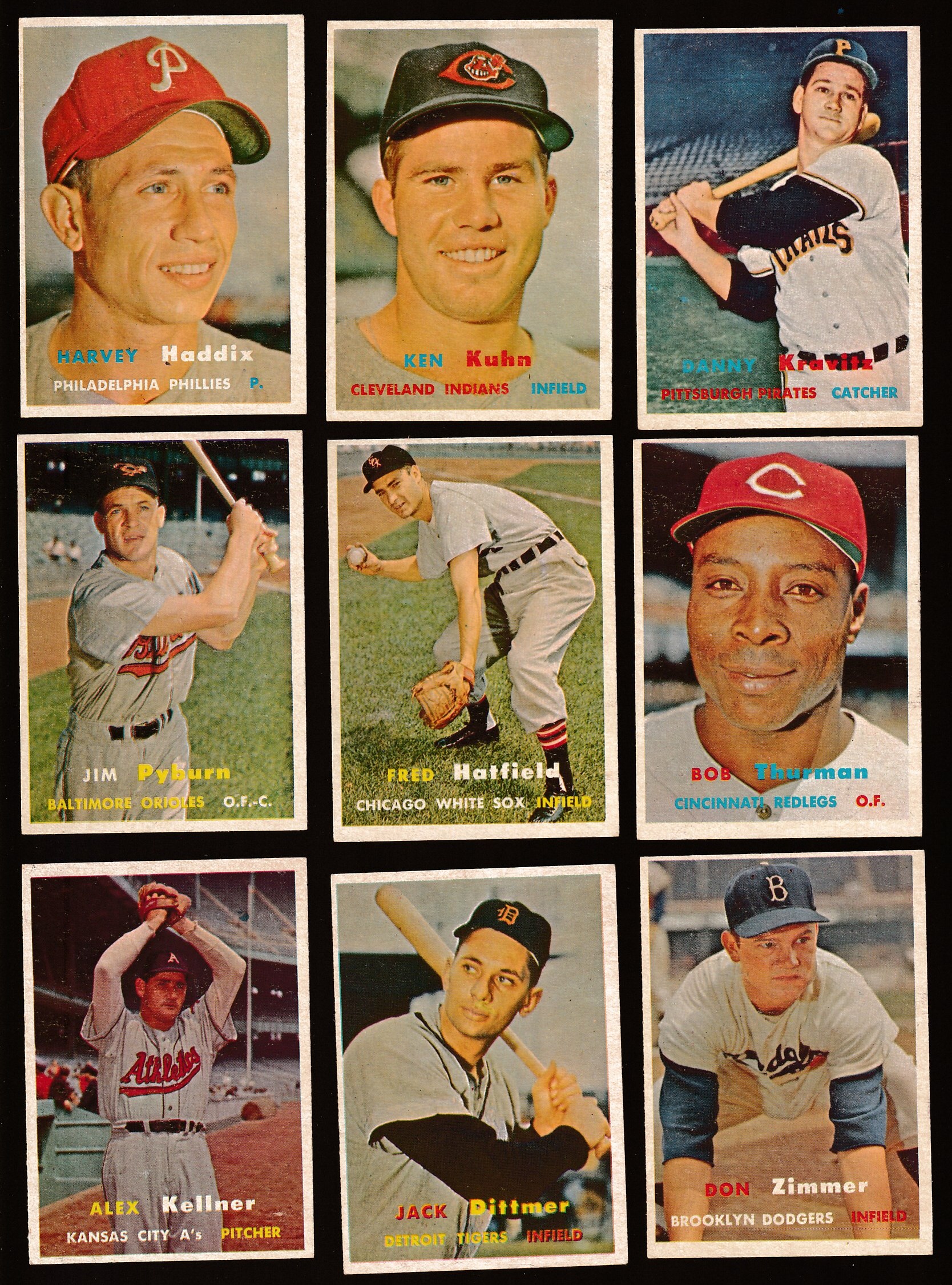1957 Topps #267 Danny Kravitz SCARCE MID SERIES (Pirates)


Please wander around the website for more info, prices, values & images
on vintage baseball, football, basketball, hockey, sport and non-sports cards.
1979 Topps Baseball Cards |

1958 Topps Baseball Cards |

1971 Kellogg's1971, Kellogg's second and by far scarcest and most valuable set, contained 75 different players on 2 ¼” by 3 ½” cards. The cards were plastic coated giving them a 3-D look !!! The plastic coating also made high grade cards nearly impossible find. Over time and the elements, most cards would curl making light and heavy cracks very common.As opposed to Kellogg's other issues which were available from the company as complete sets, 1971 Kellogg's cards were ONLY available one in each specially marked box of Kellogg's cereal. The only way to complete your 1971 Kellogg's set was to pester mom to buy, buy, buy more boxes of cereal.
In addition to the 75 different players, numerous scarcer variations exist
with minor differences in the stats on back. In addition, all 75 cards and
some variations are found with 2 different forms of copyright on the back: The "toughest" cards appear to be: # 7 Alou (1970 Oakland NL) # 28 Wright (Angles Crest Logo) # 54 Johnson (Angles Crest Logo) # 64 Fregosi (Angles Crest Logo) # 70 Osteen (No Number on back) # 2 Seaver (ERA 2.81) # 41 Gaston (113 Runs) # 65 Rose (RBI 485) |

Starting approximately in 1886, sportscards, mostly baseball cards, were often included with tobacco products, for promotional purposes and also because the card reinforced the packaging and protected cigarettes from damage. These sports cards are referred to as tobacco cards in the baseball card hobby. Over the next few years many different companies produced baseball cards. Tobacco cards soon started to disappear as the American Tobacco Company tried to develop a monopoly by buying out other companies.
They were reintroduced in the 1900s, as American Tobacco came under pressure from antitrust action and Turkish competition. The most famous and most expensive, baseball card is the rare T206 Honus Wagner. The card exists in very limited quantities compared to others of its type because Wagner forced the card to be removed from printing. It is widely (and incorrectly) believed that Wagner did so because he refused to promote tobacco, but the true explanation lies in a dispute over compensation.
Soon other companies also began producing baseball and football cards. Sports magazines such as The Sporting News were early entries to the market. Candy manufacturers soon joined the fray and reflected a shift toward a younger target audience for cards. Caramel companies were particularly active and baseball cards were one of the first prizes to be included in Cracker Jacks. World War I soon suppressed baseball card production.
